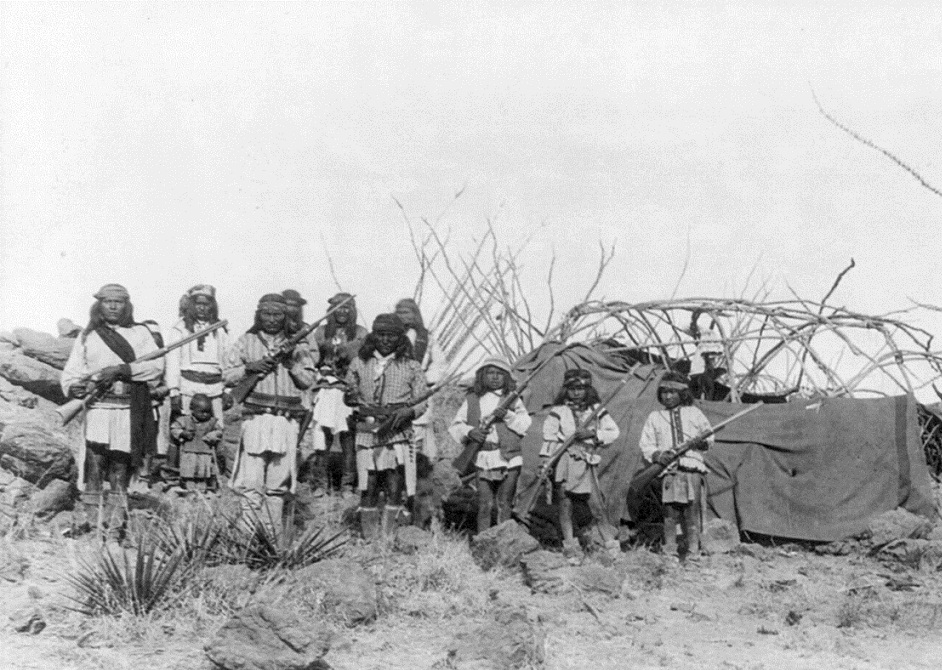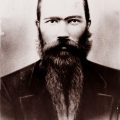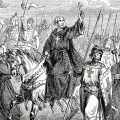
One of the major American events during the nineteenth century was the Civil War. This war, which lasted from 1861 to 1865 and caused 620,000 soldier deaths, divided the United States into two warring factions: the Union and the Confederacy. The Civil War not only divided the Americans, but also the Indians, particularly those living in Oklahoma. Many of the tribes, such as the Cherokee and the Creek, were divided between their loyalties to a slave-owning confederacy and to the federal government. Cherokee leader John Ross, himself a slave owner, and Creek leader Opothle Yoholo favored neutrality in the conflict.
In Oklahoma, the United States withdrew its troops from Indian Territory and the Confederacy increased its pressure on the tribes to sign treaties of alliance with them. As a result the Five Tribes-Cherokee, Choctaw, Creek, Chickasaw, and Seminole-signed confederate treaties.
Yet Indians provided soldiers to both Union and Confederate armies. In North Carolina, for example, shortly after the war began the Cherokee organized a battalion to fight for the Confederacy. In Wisconsin, an estimated 500 to 600 Indian men joined the Union army. The men enlisted as individuals and escaped the attention of state officials. Since Indians were not considered citizens, they were not drafted by either the Union or the Confederacy.
In 1862, the governor of Wisconsin wrote to the Secretary of War asking about the possibility of using friendly Indians in the army. The Secretary of War informed the governor that the President did not want Indians as troops.
While the Second Creek Mounted Regiment in Oklahoma was composed of 800 men on paper, in reality, the Confederate commanders frequently furloughed their men due to lack of Union activity and shortages of food and supplies. In Indian fashion, the soldiers often drifted home for their own reasons until they heard that they were needed. Then they would return to their camps. While this pattern annoyed the non-Indian officers, it was accepted by the Indian officers.
During the Civil War, both sides had Indian generals. For the Union, General Ely S. Parker was the most prominent. Parker was Seneca and was related to both Red Jacket and to Handsome Lake. Union troops often referred to him as “Grant’s Indian” and “Big Indian.” Later, under the administration of President Grant, Parker became the first Indian to occupy the position of Commissioner of Indian Affairs. He was also the last Indian to occupy this position for nearly a century.
For the Confederacy, General Stand Watie commanded the last Confederate combat unit to surrender to Union forces. Watie was Cherokee and was the brother of Elias Boudinot, the first editor of the Cherokee Phoenix. Some historians have described Watie as “ruthless, a negrophobe, and no saint.”
Elias Cornelius Boudinot, the son of Cherokee leader Elias Boudinot, was not only a lieutenant colonel in the Confederate Army, he was also elected to the Confederate Congress. Not all Cherokee supported the Confederacy: Lewis Downing rose to the rank of lieutenant colonel in the Union’s Third Indian Home Guards.
Many of the Indian troops had their own war medicine and it was not uncommon for a medicine man to paint their faces prior to battle.
In recognition of the Confederate service by the Cherokee, the North Carolina General Assembly passed an act in 1866 that provided: “That the Cherokee Indians who are now residents of the State of North Carolina, shall have the authority and permission to remain in the several counties of the state where they now reside.” In 1900, the United Confederate Veterans was founded by Indian veterans in South Carolina.




Leave a Reply